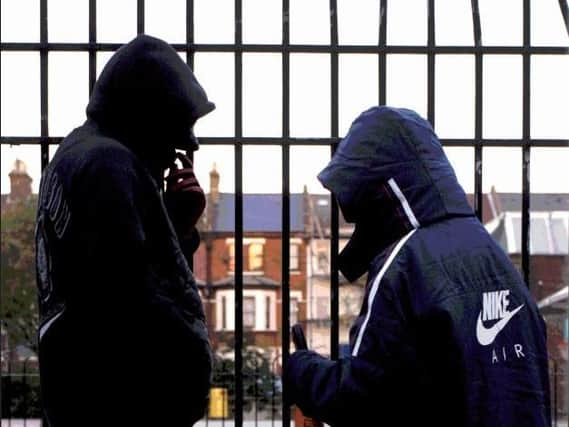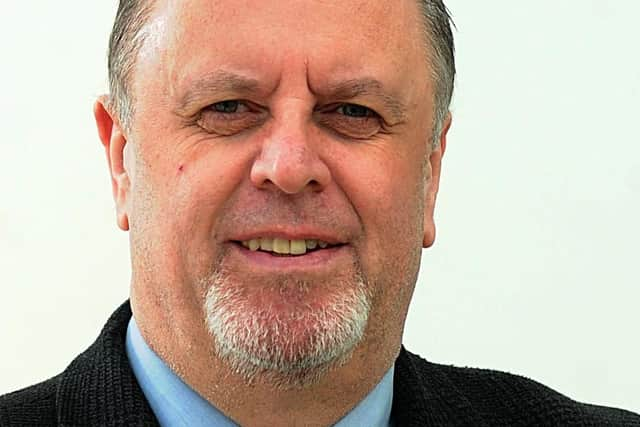Revealed: The Leeds children aged as young as THREE suspected of crimes


Nearly 200 young children were suspected of committing crimes across the district last year but could not be prosecuted because they are under the age of criminal responsibility.
Half of these offences were violent crimes, police data obtained under the Freedom of Information Act shows.
Advertisement
Hide AdAdvertisement
Hide AdThe young people suspected of crimes last year included a three-year-old suspected of a violent crime, a five-year-old and a six-year-old jointly suspected of a sexual offence and a four-year-old suspected of criminal damage.


Police say they are now recording all crimes by under 10s, whereas in previous years they may have been recorded as ‘no crime’, meaning the true extent of offending by young children is only now being revealed.
But with offending by those aged 10 to 17 also on the rise in West Yorkshire, Police and Crime Commissioner Mark Burns-Williamson has said cuts to youth services are having an impact on crime.
He said: “There is no question that youth crime generally, pre- and post-10 years old, has been exacerbated by the significant cuts to public services across the board, both locally and nationally, as tackling the related issues are quite complex and often includes a host of partner agencies.
Advertisement
Hide AdAdvertisement
Hide Ad“Police involvement with children under 10 years old is a last resort but becoming more necessary due to the gaps in other services.”
Mr Burns-Williamson said in the past couple of weeks he had given out £210,000 in funding to 49 groups working to tackle violent crime.
He said: “However, we really do now need to see sustained investment from the Government back into public services.
“That is something I will continue to fight for, but turning these things around takes time and needs longer-term solutions if this worrying trend is to be halted, which is in all our interests.”
Advertisement
Hide AdAdvertisement
Hide AdCrimes by under-10s remains a tiny fraction of all youth offending.
Across West Yorkshire, there were 617 crimes recorded last year where the suspect or suspects were under 10.
In comparison, there were more than 25,000 cases involving suspects aged 10 to 17.
Detective Superintendent Jon Morgan, of West Yorkshire Police’s Safeguarding Central Governance Unit, said: “To put these figures in context, offences involving suspects under 10 years old make up an extremely small percentage of overall crime.
Advertisement
Hide AdAdvertisement
Hide Ad“As part of our victim-centred approach, we record all crimes - even where the suspect is immediately identified as a child under the age of 10.
“Previously, these offences would either be no-crimed or marked as ‘undetected’ but since June 2014, in accordance with revised Home Office guidelines, we now finalise such offences as ‘outcome 11’ - prosecution prevented, suspect too young.
“This has resulted in an increase in recorded crimes with suspects under 10 years old but I would stress that we have not seen any marked increase in actual offences in this time.
“While a suspect under the age of 10 is under the age of criminal responsibility and therefore will not be subject to the criminal justice process, alongside partner agencies, we will work with them and their parents to address the causes and motivations of their offending.”
Advertisement
Hide AdAdvertisement
Hide AdHe said the police shared details of children who have committed offences with the relevant local authorities, so they could provide further support as necessary through their multi-agency safeguarding hubs.
Children under 10 who break the law cannot be charged with committing a criminal offence, as they are deemed too young to fully understand what they are doing is wrong.
However, they can be given other punishments, including a curfew. If they break the law regularly they can be taken into care or their parents held responsible.
Meanwhile, children aged 10 to 17 can be arrested and taken to court if they commit a crime.
Advertisement
Hide AdAdvertisement
Hide AdCases are usually heard in less formal youth courts, but youths can also appear in adult courts for more serious crimes such as murder.
Youth offenders are also given different sentences to adults, such as being sent to youth offender institutions rather than adult prisons.
Youth Offending Teams (YOTs) work with young people who get into trouble with the law, trying to prevent reoffending and incarceration.
They are made up of healthcare professionals, the local authority, the probation service and the police.
Advertisement
Hide AdAdvertisement
Hide AdThey also supervise young people who are given community sentences and run crime prevention programmes.
Reforms planned for the youth justice system include new ‘secure schools’ for children aged 12 to 17.
A spokesperson for the Ministry of Justice spokesperson said: “We are undertaking wholesale reform of the youth justice system and this week announced plans to open our first secure school.”
Reducing the number of children arrested and entering the criminal justice system has been the focus of campaigning by the Howard League for Penal Reform since 2010.
Advertisement
Hide AdAdvertisement
Hide AdArrests of children in England and Wales have fallen by more than two-thirds since that time, to just under 80,000 in 2017.
As the charity shared the latest figures last month, chief executive Frances Crook said: “It is a phenomenal achievement. It means that tens of thousands of children will have a brighter future without their life chances being blighted by unnecessary police contact and criminal records.”